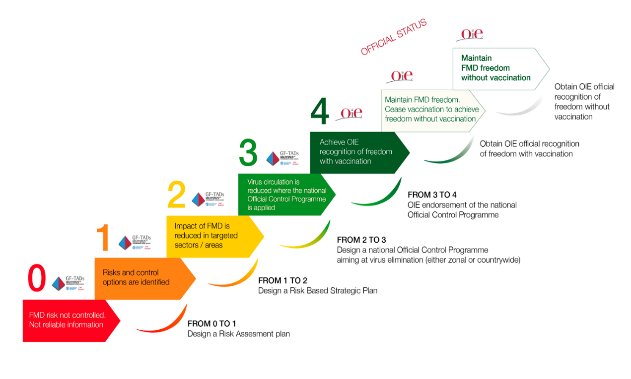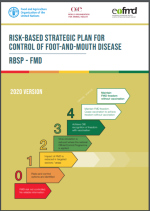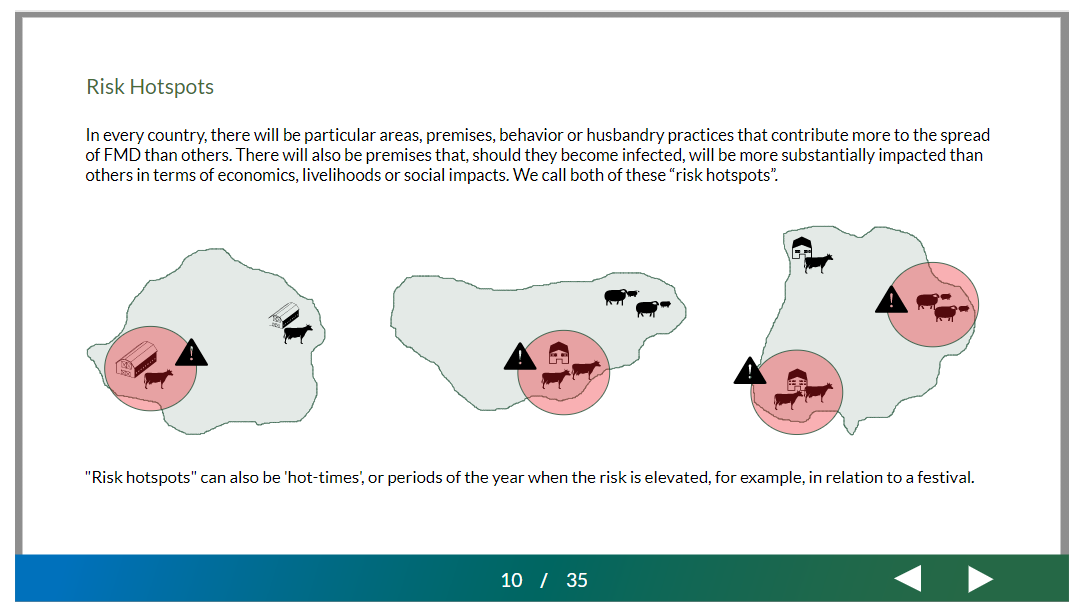Introduction to the Risk-Based Strategic Plan
Introduction to the Risk Based Strategic Plan
New open access online course
The Progressive Control Pathway for Foot-and-Mouth Disease (PCP-FMD), developed by FAO and EuFMD and endorsed by the OIE, is a risk and evidence-based framework to guide endemic countries to progressively improve the management of FMD risks and reduce disease impacts and viral circulation. To date, the PCP-FMD has been implemented in more than 80 countries worldwide, most of which are in provisional Stage Two or below.
To assist countries to progress on the PCP-FMD, a new open access course on developing a Risk-Based Strategic Plan (RBSP) has been developed.
For a country to progress to PCP-FMD Stage Two, the Veterinary Services must develop an RBSP that describes how the country intends to reduce the impact of FMD in at least one husbandry sector. The RBSP applies the outputs and knowledge gained through the implementation of the activities in PCP-FMD Stage One.
The RBSP should be endorsed by the national Authority and submitted to the GF-TADs FMD Working Group for technical review. Ultimately, the RBSP should be submitted to the Regional Advisory Group for acceptance. An RBSP template, including guiding notes, has been developed by the GF-TADs FMD Working Group and is currently available in French and English.
To further assist FMD endemic countries to develop their RBSP, an online open-access and self-directed course ‘Introduction to the RBSP’ has been produced by the EuFMD and the GF-TADs FMD Working Group. This course is also part of the PCP-FMD Support Officer (PSO) training project, in combination with other virtual courses.
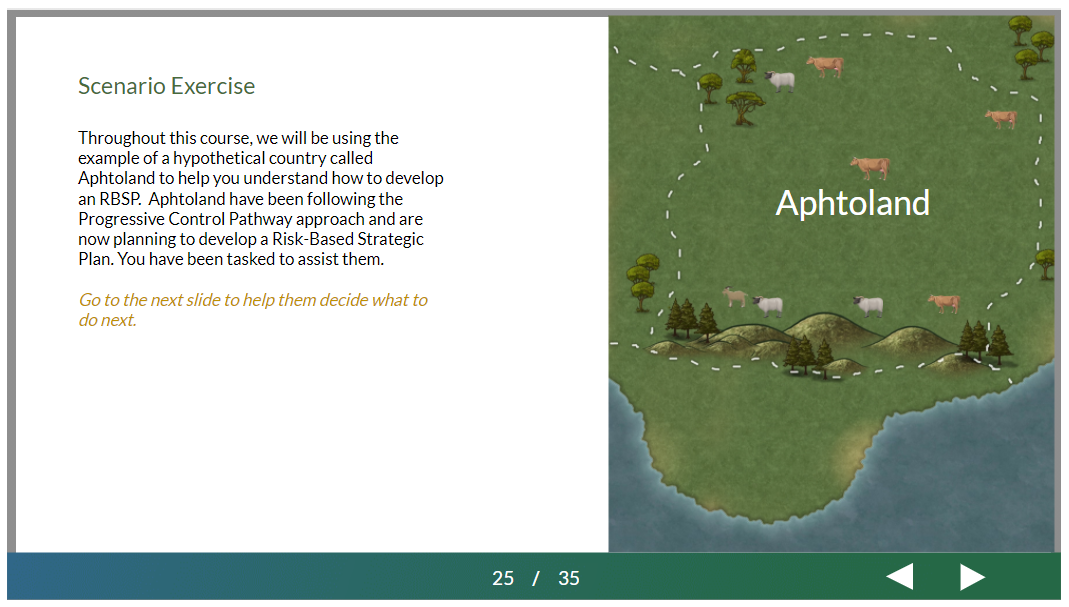
The ‘Introduction to the RBSP’ course provides an overview of the RBSP structure and development. After studying this course, it is expected that participants will be able to:
- explain the importance of the RBSP within the PCP-FMD;
- describe criteria that can be used to assess if developing an RBSP would be recommended for a country;
- describe the information and content that should be included within an RBSP;
- initiate or assist with the development of an RBSP document;
- describe the expertise needed to contribute to the RBSP, the stakeholder consultation required and provide examples of approaches to engage stakeholders;
- identify and access additional resources available to assist with the development of an RBSP.
"Introduction to the RBSP" is organized into 6 six consecutive modules:
- Introduction to the RBSP
- The Situation Analysis
- Quality of the Veterinary Services
- Strategic Framework
- Monitoring and Evaluation
- From Plan to Action
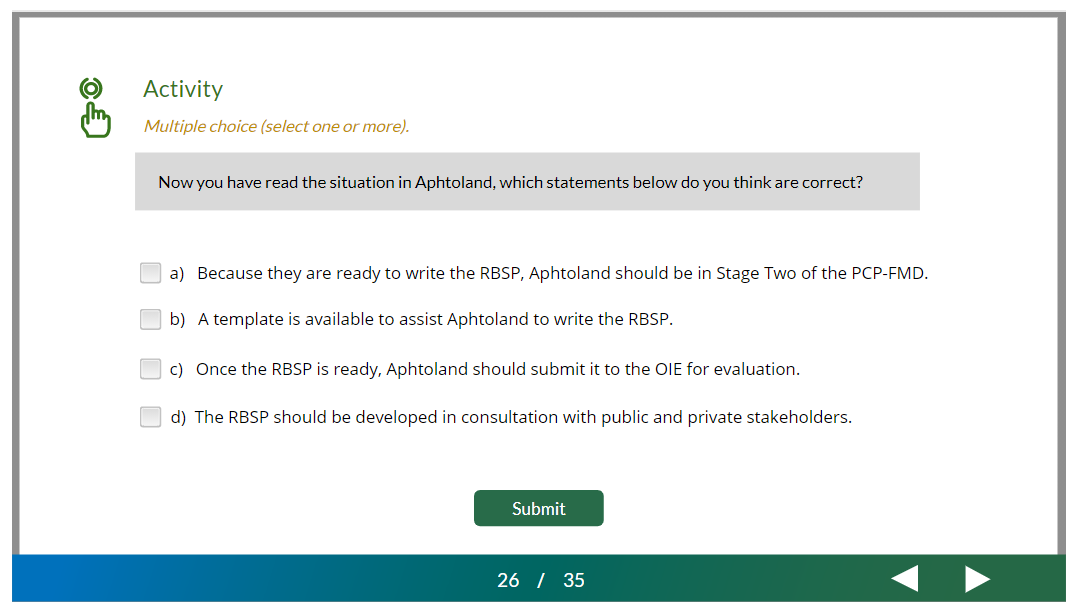
Start studying
Enrol in the course
